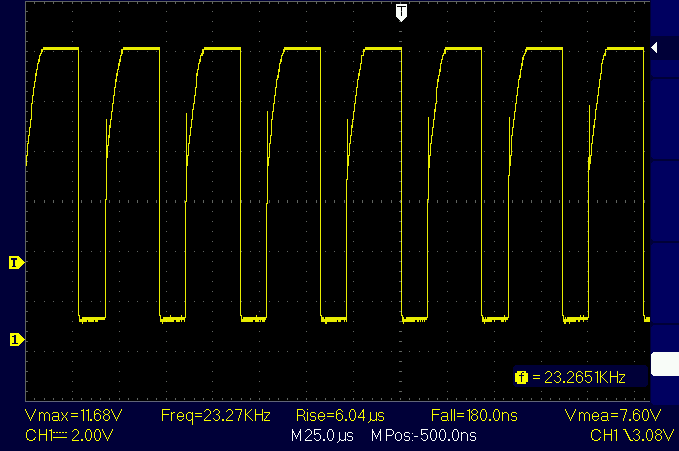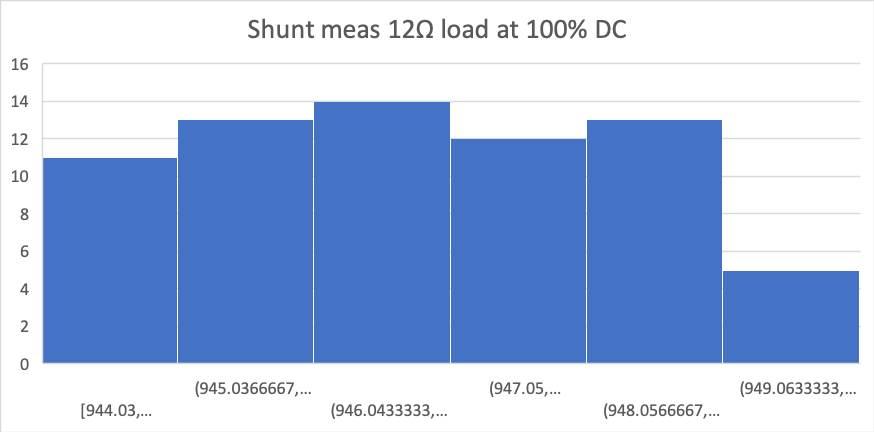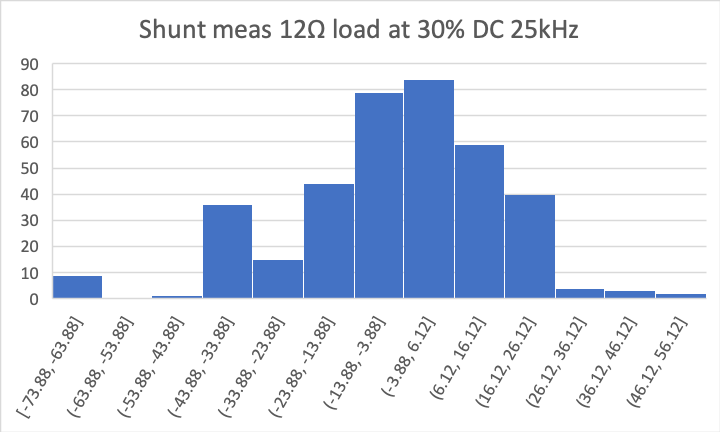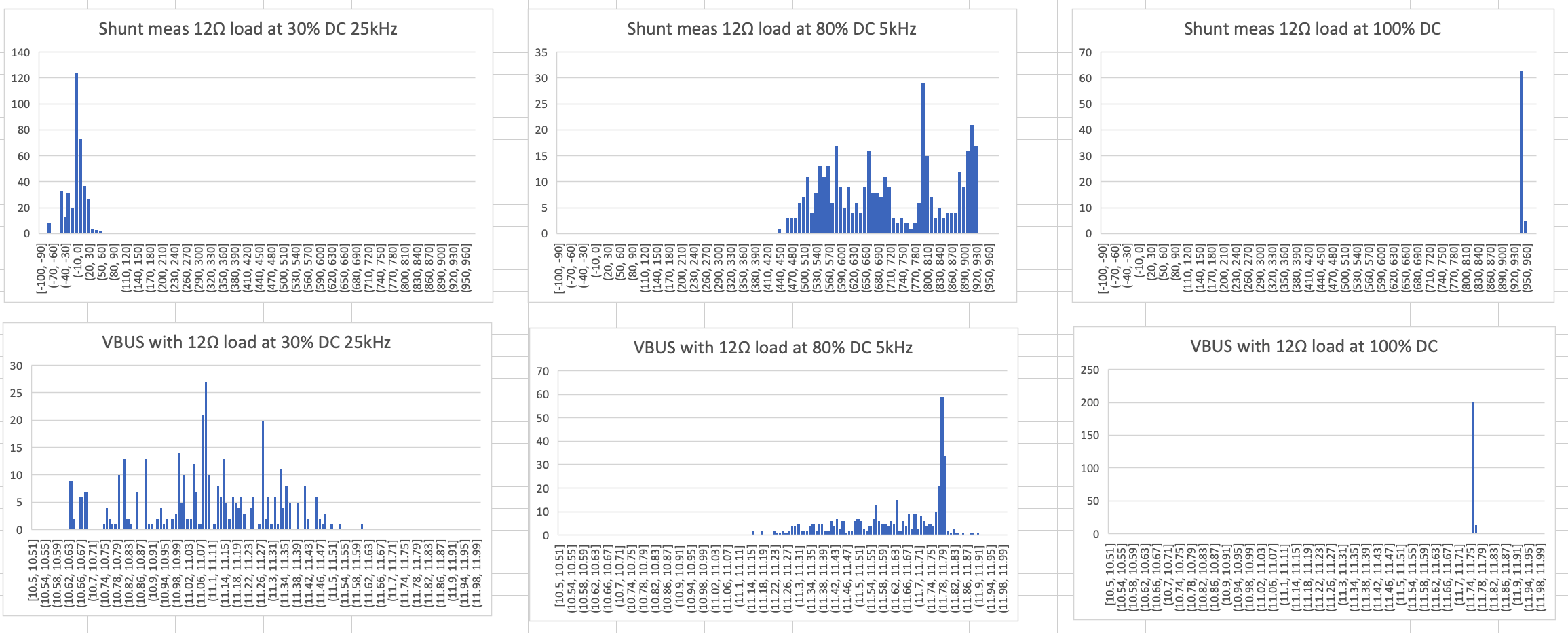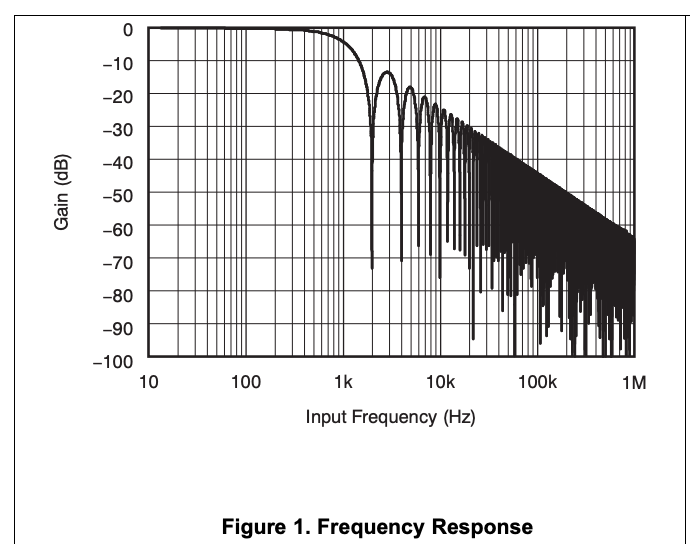Other Parts Discussed in Thread: , DRV103, INA230
Hello,
I'm using an INA220-Q1 to measure several types of loads. Some are resistive with a 100% duty cycle, others are resistive with a high duty cycle ~75%, and others are inductive with a low duty cycle ~30%.
My INA220-Q1 setup is having trouble measuring the loads that are not driven at 100% duty cycle. I am using the 32-sample averaging mode for the ADC. The measured values for the high duty cycle load are fairly accurate although they do tend to jump about by about 100mA (on a ~1A load), likely due to the limited input filtering of the 5kHz pwm signal. My biggest problem actually lies with the low duty cycle inductive load. The INA always returns large negative current values for this load, even though I have clamping diodes that clamp the inductive effects.
I am using the reference design given in the datasheet with 10Ω series resistors on the shunt measurement lines and a 1µF capacitor between those 2 lines. This sets up a sort of low-pass filter. Although I'd like to just raise the resistor values to lower the cutoff frequency of the filter, the datasheet specifies that the INA220's IN+ and IN- bias current is 20µA, which severely limits how high these resistors can be. As a test, I tried increasing my PWM frequency to 100kHz which I expected to put a positive voltage of about ~6-10mV across IN+/IN-, but it's still measuring -1 to -1.3A instead of about 0.4A. As a test, I also tried placing a resistive load into this circuit instead of inductive, and it returns smaller but still negative numbers (-500mA or so, when I would expect closer to +300mA).
Are there fundamental limits to how the INA220-Q1 can measure PWM current? I will continue testing and trying new changes, such as increasing the capacitor value in the filter, but at this point I'd appreciate feedback on whether I'm headed down a useless or worthwhile path with this chip.
Thanks



